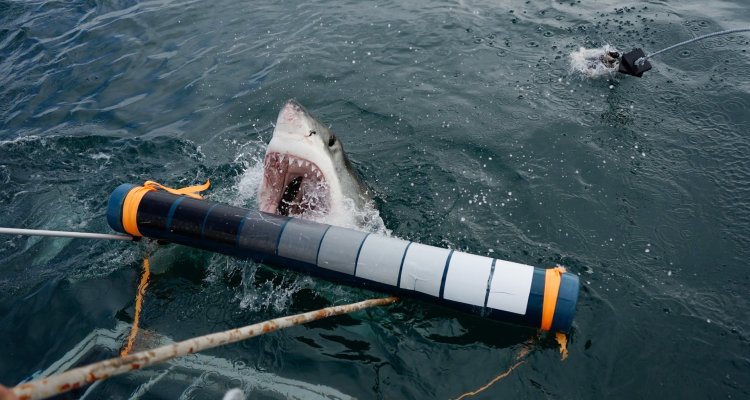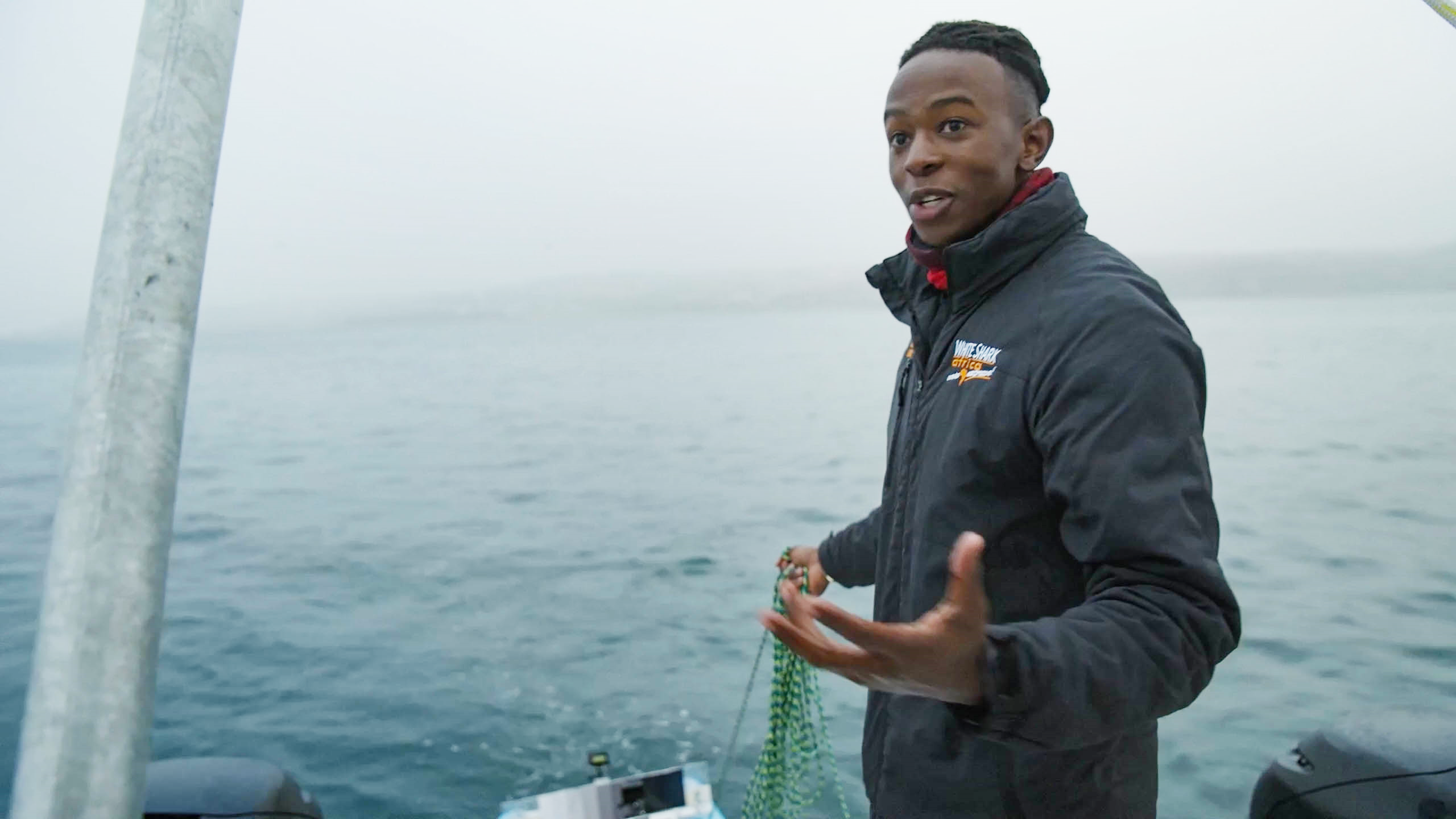
Wageningen World
‘The first time I saw a shark changed everything’
When a South African white shark attacks, it jumps out of the water and, oddly enough, goes pale. National Geographic Explorer Gibbs Kuguru has made a documentary about this. ‘The ferocity of the attack, the teeth, the impact on the prey. When you see that, you can’t just sit and watch.’
Photo above: Gibbs Kuguru - The colour of the attacking great white shark can easily be compared with the shades of grey tints on the colour board.
Explorers still exist, and one of them is Gibbs Kuguru from Kenya, who has been a PhD student at WUR for two years now. He was officially awarded the status of National Geographic Explorer in June this year. The renowned institution became aware of him through his shark videos for the Disney-NatGeo Channel, and the award enables him to go exploring the world in search of good stories.
Gibbs Kuguru has been studying sharks for 10 years, first for the diving school he was working for and later as a Master’s student at the University of Stellenbosch in South Africa. He then became a researcher at the Worldwide Fund for Nature and then made the move to Wageningen.
‘A beautiful animal that deserves our respect’
His parents actually intended for him to become a doctor. ‘I started out studying medicine in the US but I wasn’t happy doing that. My study advisor saw that too and tipped me off about a job in South Africa on a boat that took tourists out to go underwater in a cage to see great white sharks I wasn’t a diver,’ says Kuguru. ‘I actually couldn’t even swim properly and – like most people – I was scared of sharks. But the choice was: to continue my studies or to go to the sharks. I opted for the sharks.’
I actually couldn’t even swim properly and I was scared of sharks
And his fear quickly evaporated. ‘The first time I saw a shark changed everything. Sure, it’s a hunter, untamed and fierce, but it is also an incredibly beautiful animal that deserves our respect. And much less dangerous than, for example, a lion when you come face to face.’
That’s as long as you know how to behave. ‘Not long ago, in South Africa, I fell out of my kayak into water full of great white sharks. My first reaction was: “shit!” But my training took over. “Don’t react like prey. Show that you’re not panicking or in distress. Don’t flounder.” So I grabbed my paddle, swam calmly back to the kayak and climbed in. Nothing happened. But I did paddle back to the beach very fast.’
Great whites change colour when hunting
At the time, Kuguru was in South Africa to film a documentary about a remarkable phenomenon: the way great white sharks change colour when hunting. This phenomenon has never been studied before. Kuguru: ‘My former boss on the boat once said: hey, that shark we just saw seems to have gone paler. I thought: he’s crazy. But later I heard similar stories from other people.’
So Kuguru and his shark mentor Ryan Johnson decided to research this, and got the backing of National Geographic. ‘Things like colour change makes for an interesting story, of course’. The researchers make smart use of the behaviour of the sharks, which jump out of the water when they attack, showing themselves in all their glory. ‘Only in South Africa do the great white sharks do that.’

Kuguru and his colleagues designed an experiment with a fake seal dragged behind the boat on a cord. On a floating rack in front of the seal is a colour board. As soon as the shark jumps out of the water to attack, it is photographed from the boat. It is then easy to compare the shark’s colour with the shades of grey on the board. Kuguru has dozens of
photographs of such attacks, which he never tires of. ‘The ferocity of such an attack, those teeth, the impact on the prey. When you see it, you can’t sit still. Yes, it happened again!’
Skin tissue reacts to adrenaline
Kuguru thinks he now understands the mechanism behind it. ‘I think it’s an unconscious response of the nervous system, just like blushing. Our hypothesis is that several different hormones induce this colour change. Adrenaline, for example, which is released when the shark feels threatened or scared.’ This is still a hypothesis at this stage, but one that
is supported by lab tests, in which skin tissue from the great white shark was exposed to adrenaline. This produced the same colour change.
So the colour change is an effect of the age-old fight-or-flight response. Kuguru: ‘The shark’s muted colour pattern matches the colour of the deep ocean, so I think it is a natural adaptation that sharks have developed to gain an evolutionary advantage. But much of this is still hypothetical.’